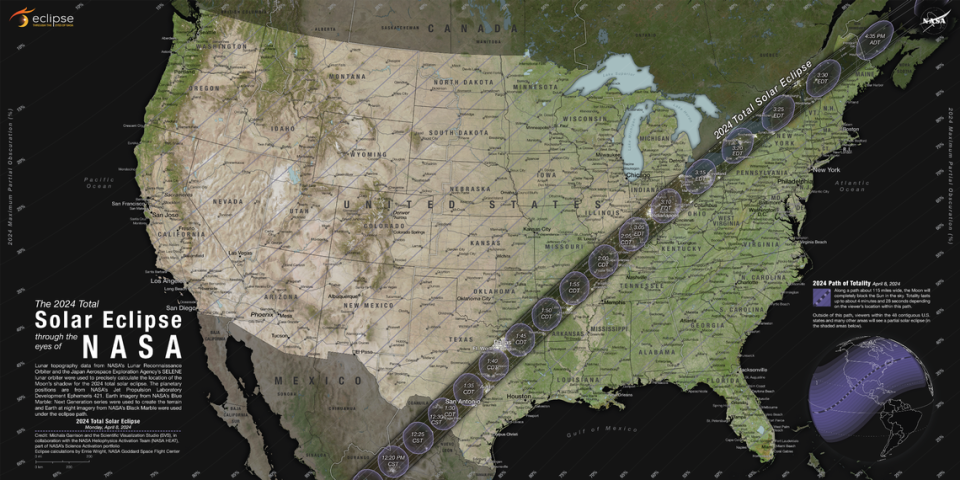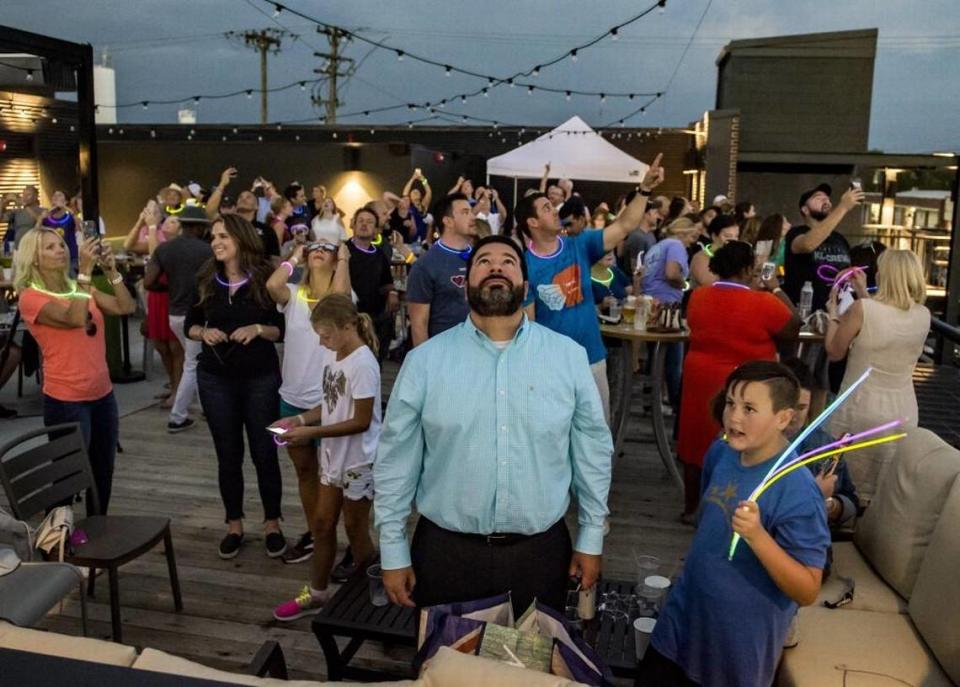How to see 2024 solar eclipse from Kansas City: When is it and where is the path of totality?
On April 8, 2024, a solar eclipse will cross North America, and curious Kansas Citians can experience it.
The path of totality will pass through states including Arkansas, Missouri and Illinois. Metro residents might remember Aug. 21, 2017, when a total solar eclipse passed over Kansas and Missouri.
The next time this will happen is 20 years from now in 2044.
Here’s how you can experience this rare astronomical phenomenon, according to NASA.
What is a solar eclipse?
A solar eclipse occurs when the moon comes between the Earth and the sun, blocking the sun’s light on Earth.
When the moon obscures some of the sun, that is called a partial solar eclipse. On April 8, all of the contiguous United States will experience at least a partial eclipse.
The moon blocks out the whole of the sun in what’s called the “path of totality.” People experiencing totality might see the outer atmosphere of the sun, or the corona. Compared to the 2017 eclipse, this one will have a wider path, longer totality — up to 4.5 minutes — and cross over more populated areas of the United States.
The last solar eclipse that crossed the Americas was in October. That one was annular, which means the moon is not large enough in the sky to entirely block out the sun causing an effect referred to as a “ring of fire.”.
What will be visible from Kansas City?

Kansas City will experience a partial solar eclipse on April 8. In the metro area, the sun will be about 90% covered by the moon at the peak at almost 2 p.m.
Where can I see totality?
Unlike 2017, the Kansas City area will not completely darken in the solar eclipse. However, if you’re up for a road trip, you can visit these urban areas less than a six-hour drive from downtown Kansas City that will be in the path of totality.
Cape Girardeau, Missouri (5 hour drive)
Carbondale, Illinois (5 hour, 30 minute drive)
Conway, Arkansas (5 hour, 50 minute drive)
What is a partial solar eclipse like?
People in Kansas City can observe the moon blocking the sun during a partial eclipse. You can use eclipse glasses and indirect viewing devices like pinhole cameras to safely see the covered sun.
During a partial solar eclipse, the sky darkens and temperatures cool. Birds, insects and other animals might act like it’s night time.
Where can I get eclipse glasses?
While you may be tempted to look at the eclipse with your bare eyes: don’t. That causes eye damage. Even observing through dark sunglasses, a camera or a standard telescope is dangerous.
If you want to see the eclipse from home, make a simple pinhole camera out of paper or buy eclipse glasses. Check the fine print on your glasses to make sure they comply with the ISO 12312-2 international safety standard.
What if there’s bad weather?

While the moon will go in front of the sun no matter what, pesky clouds could block the view for Kansas Citians. The American Astronomical Society recommended taking off your eclipse glasses during a cloudy eclipse and focusing on the darker landscape. Again, don’t look directly at the sun even when clouds are present.
Do you have more questions about nature in Kansas City? Ask the Service Journalism team at kcq@kcstar.com.

